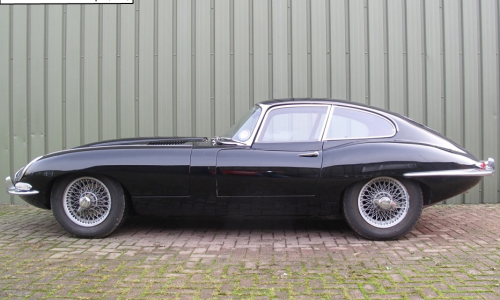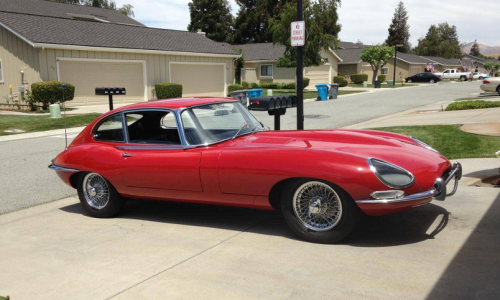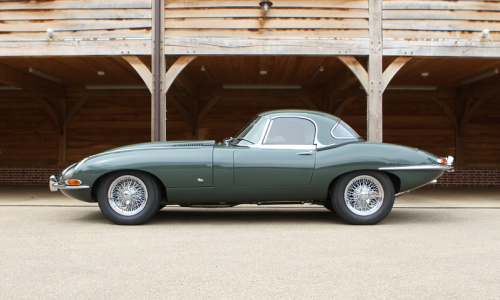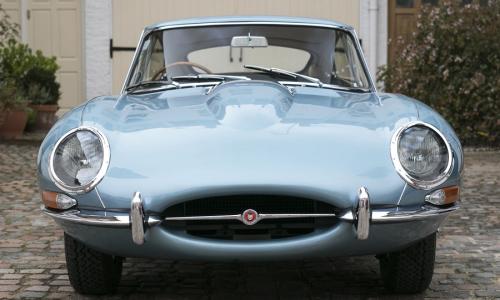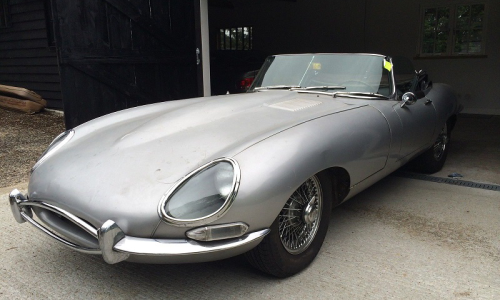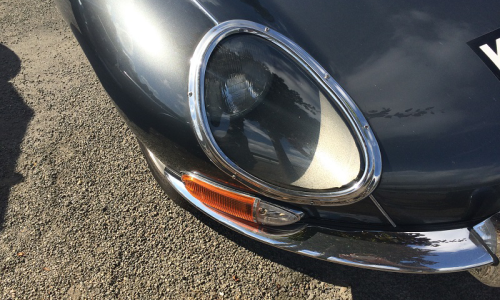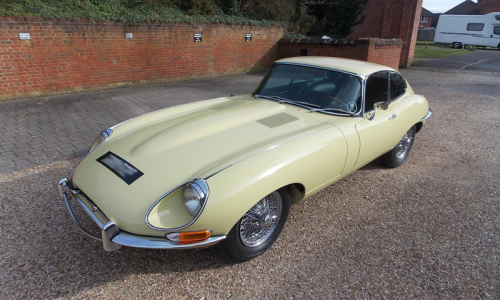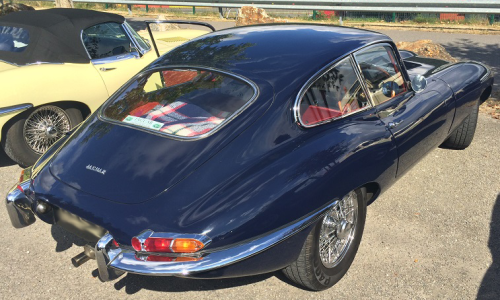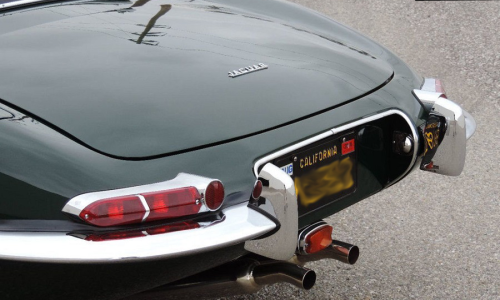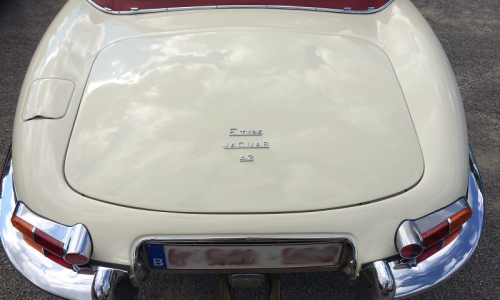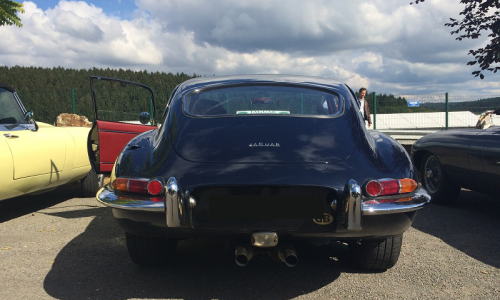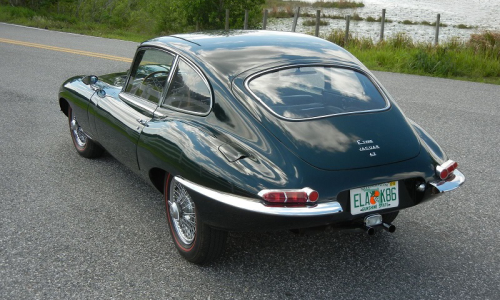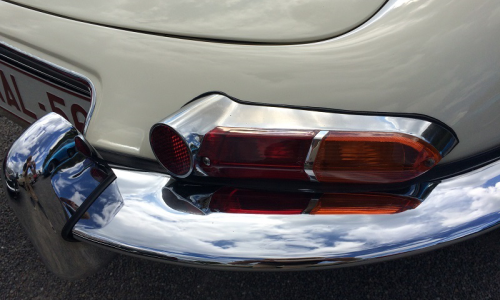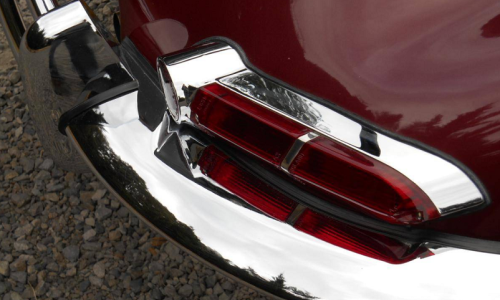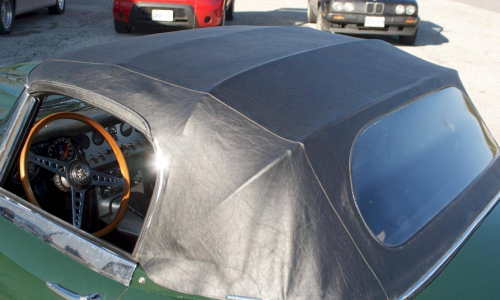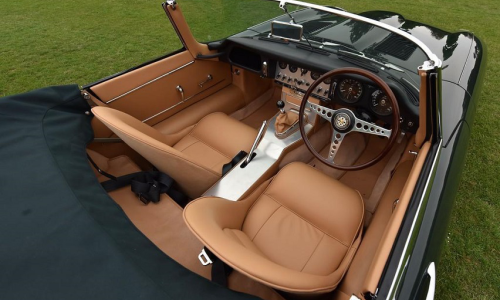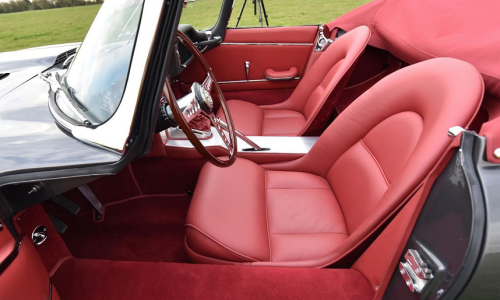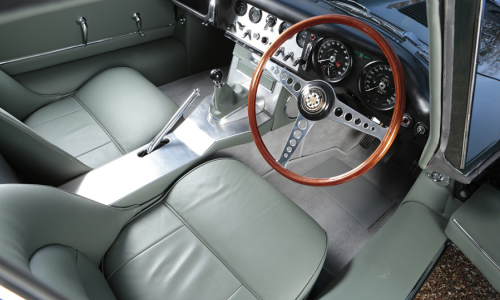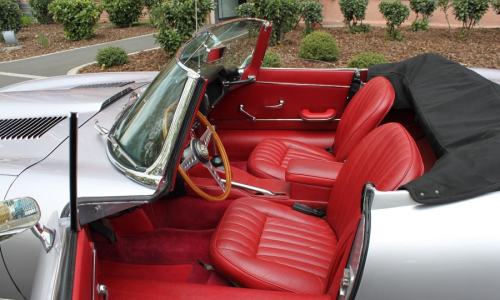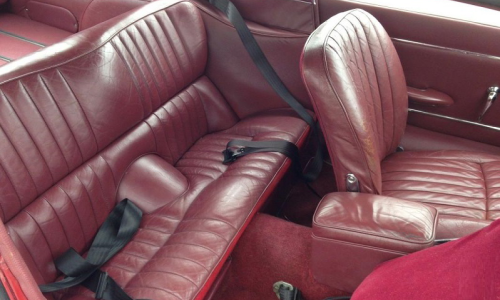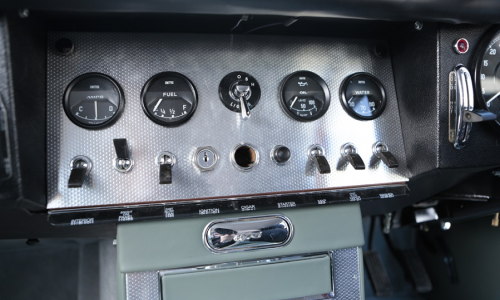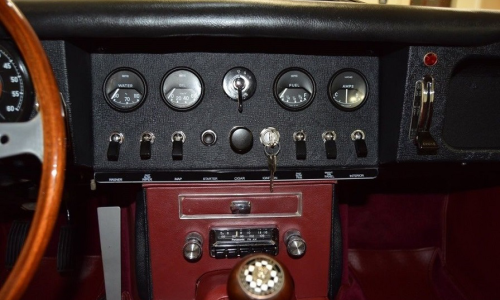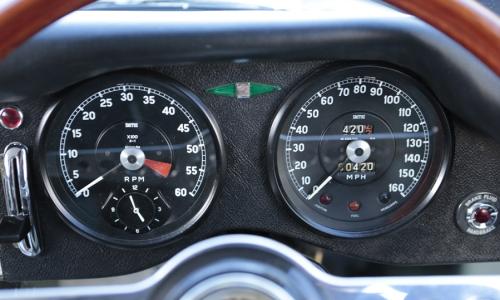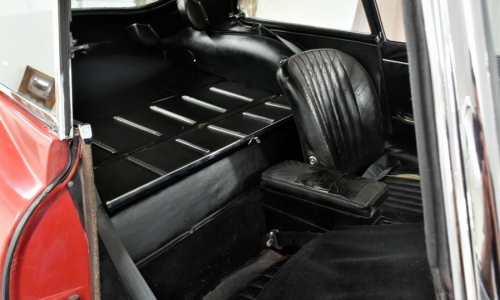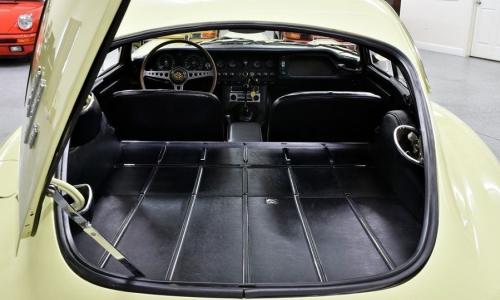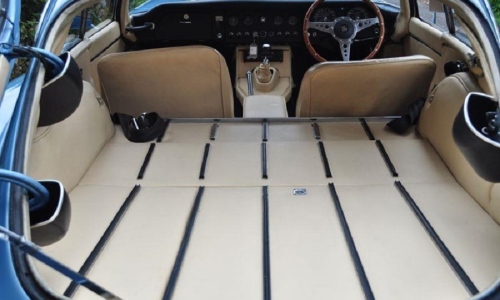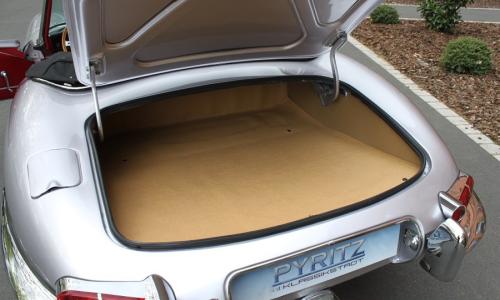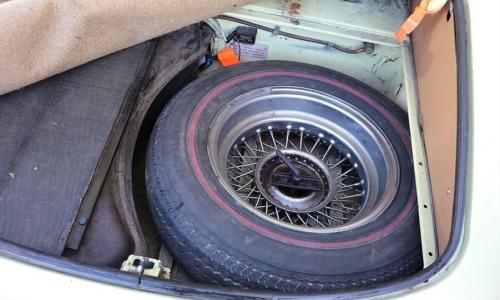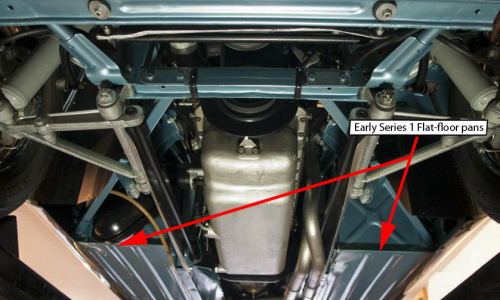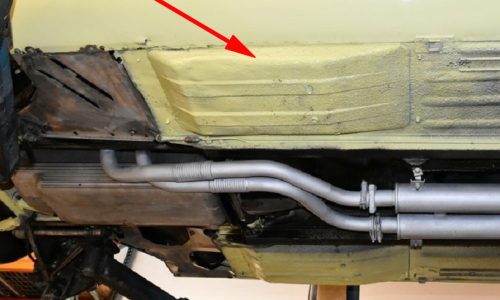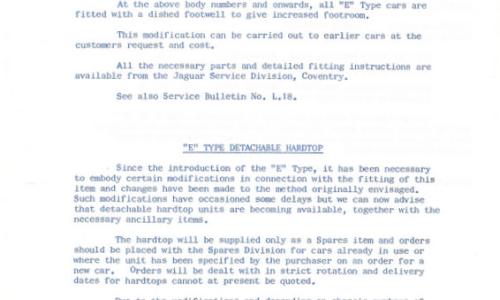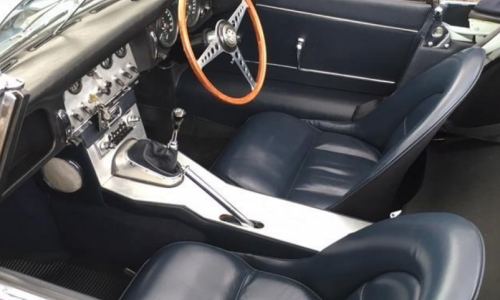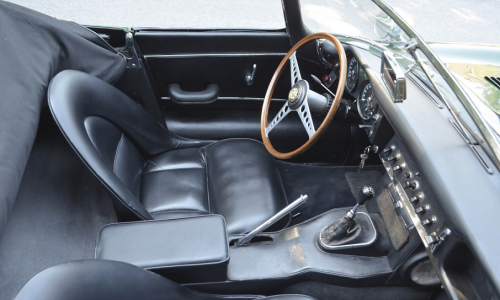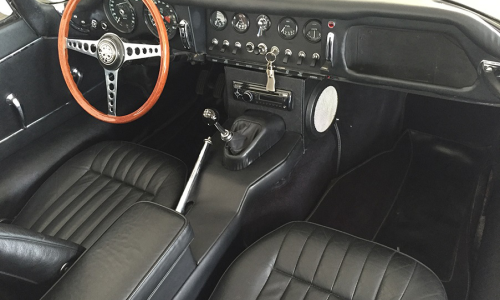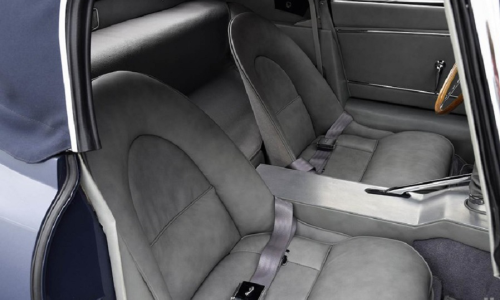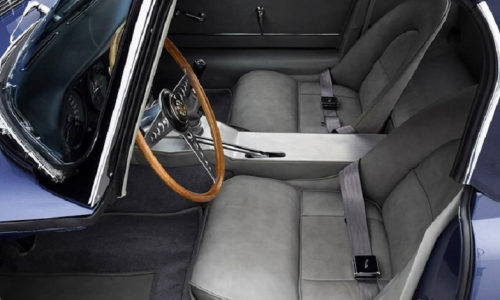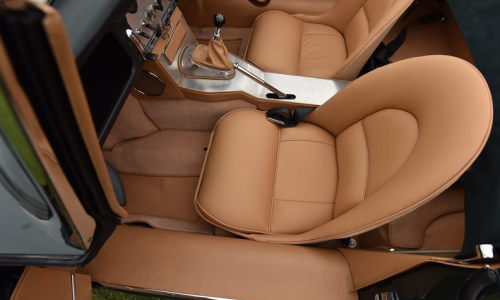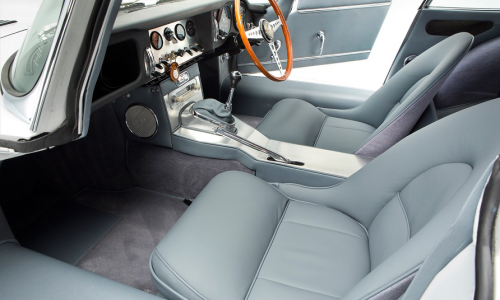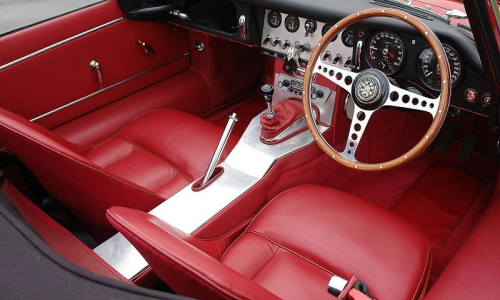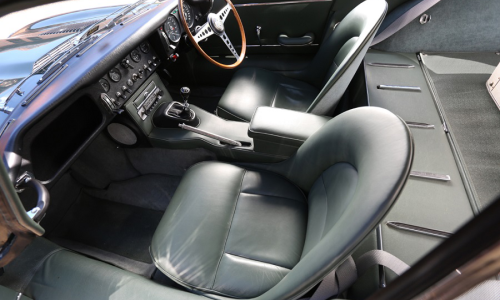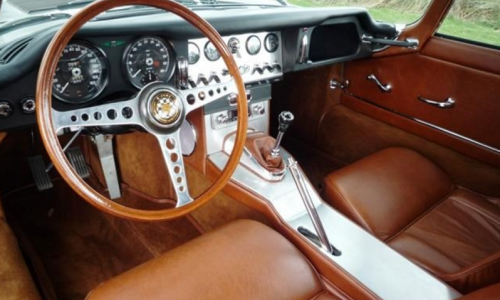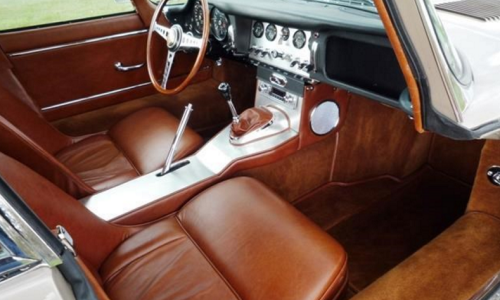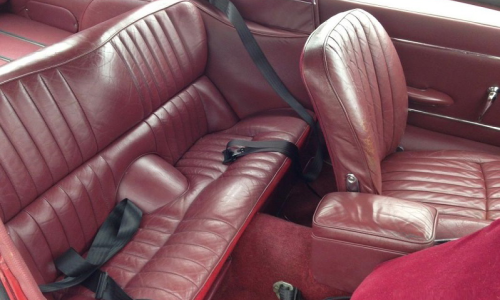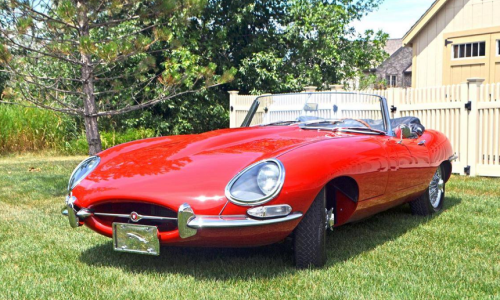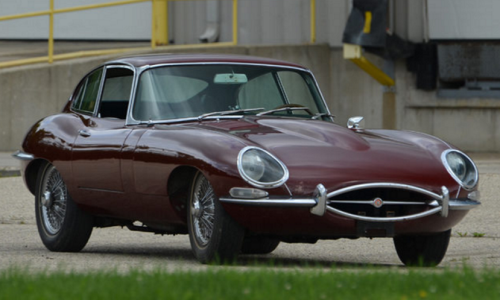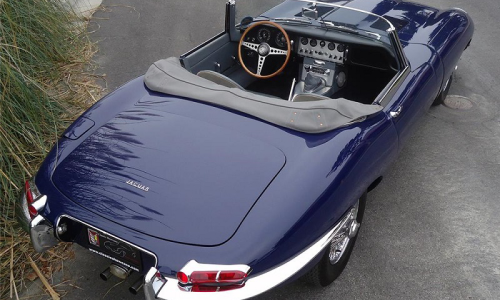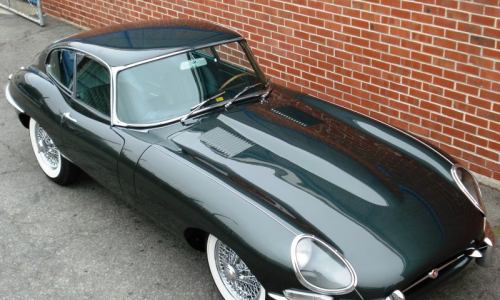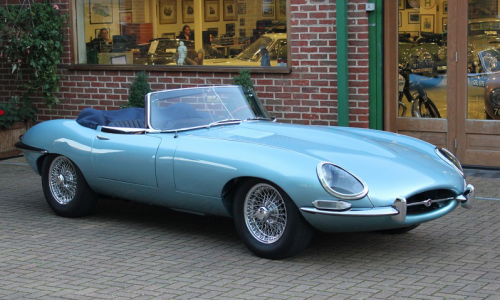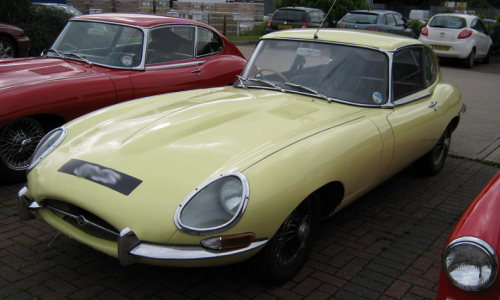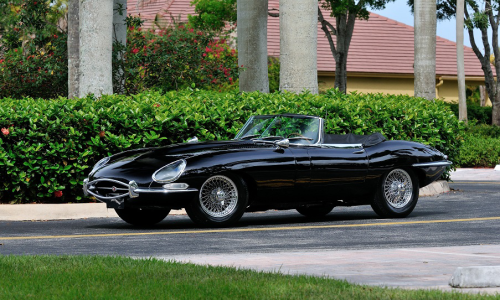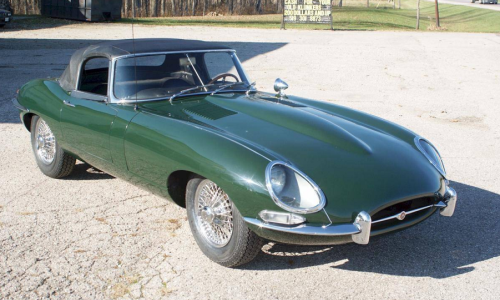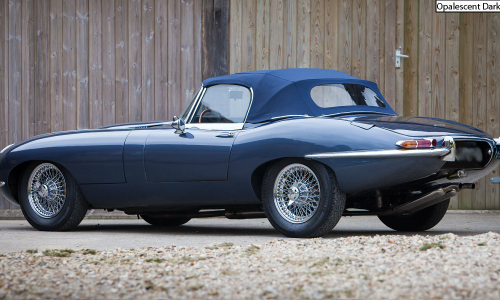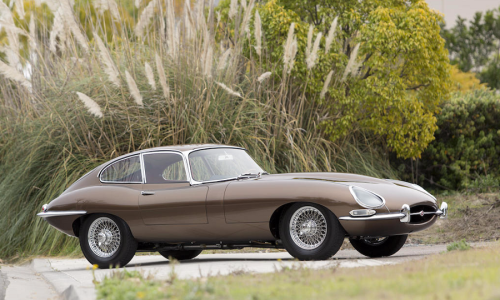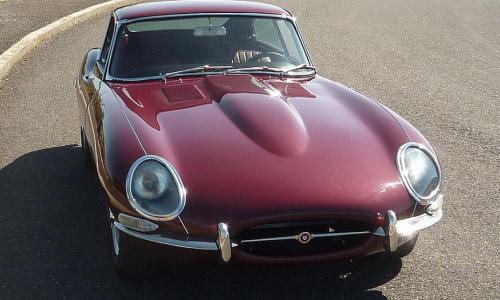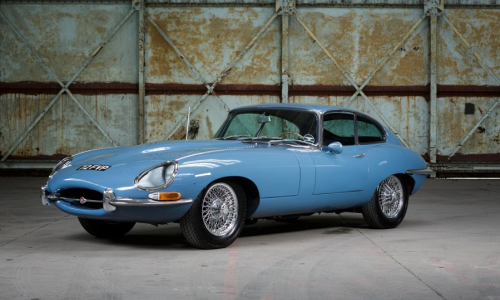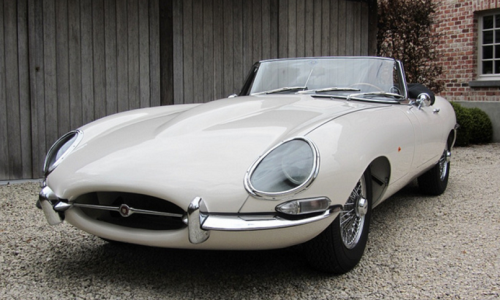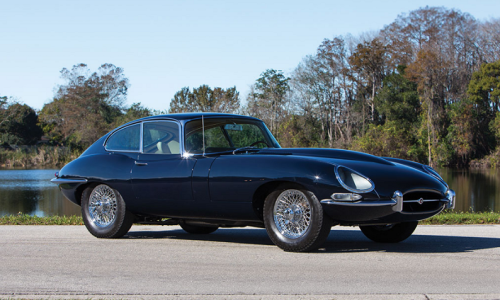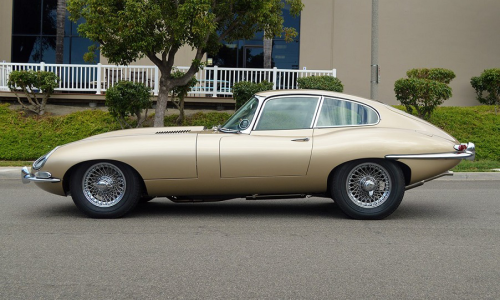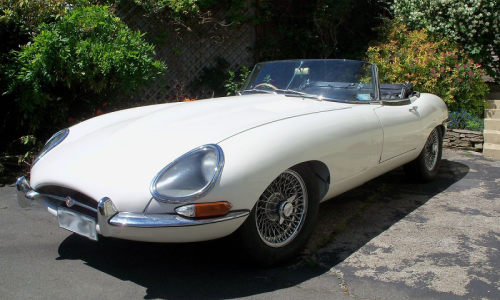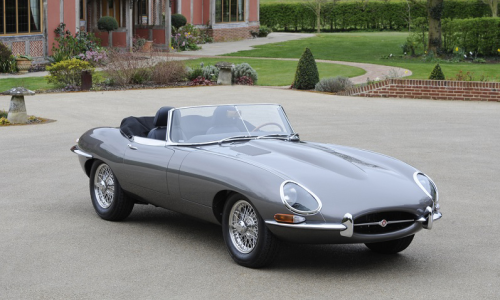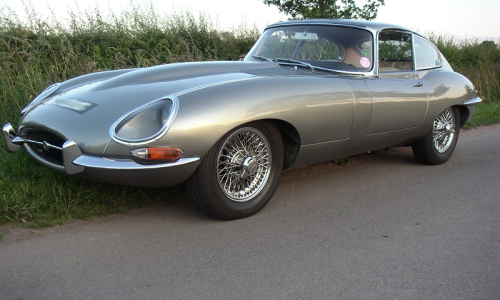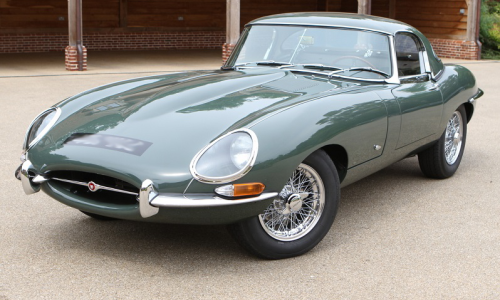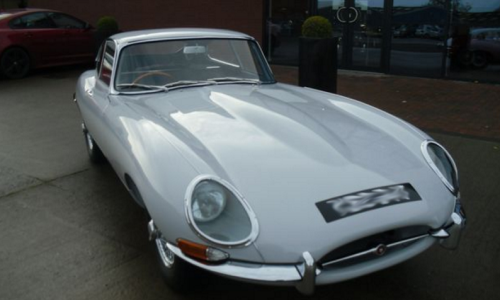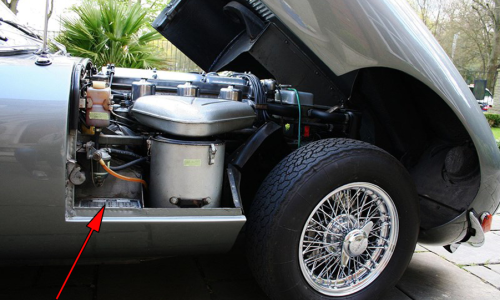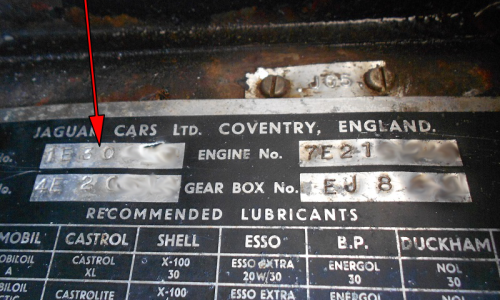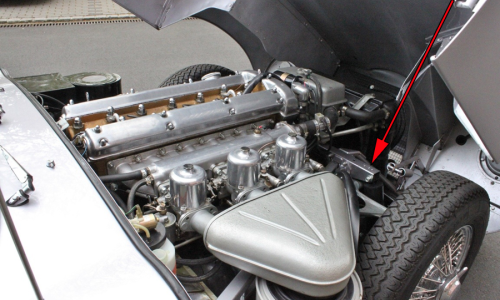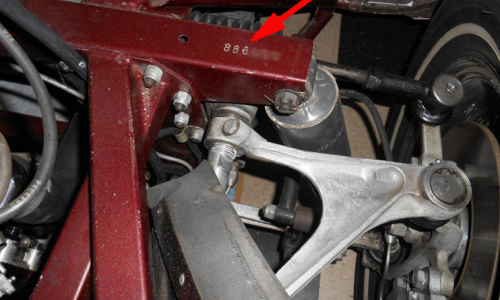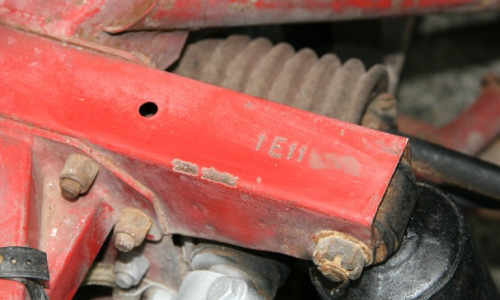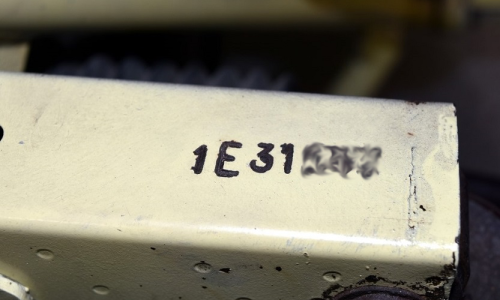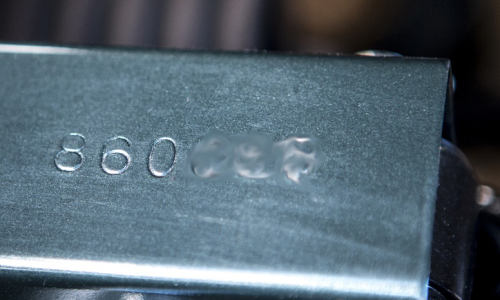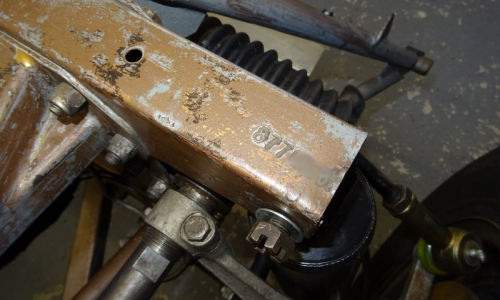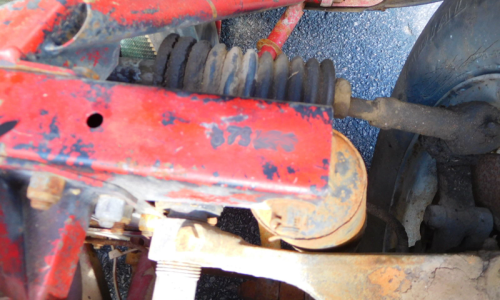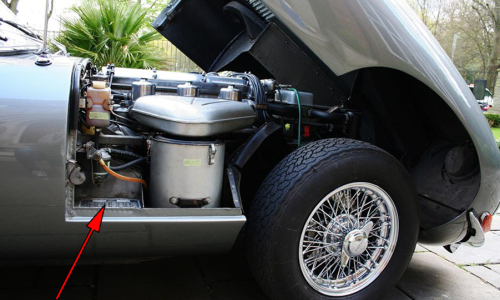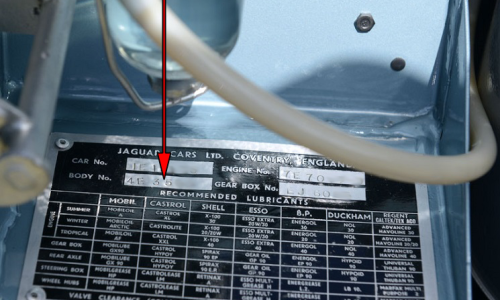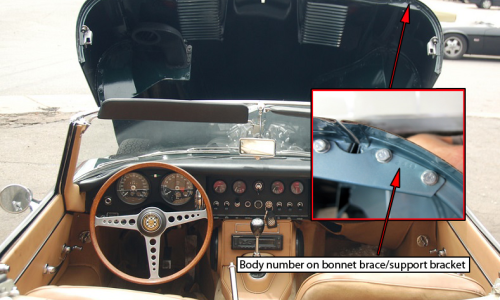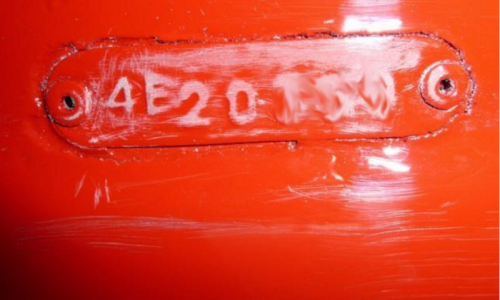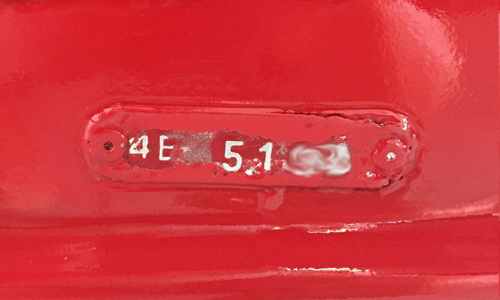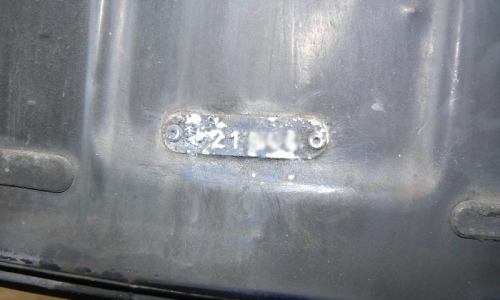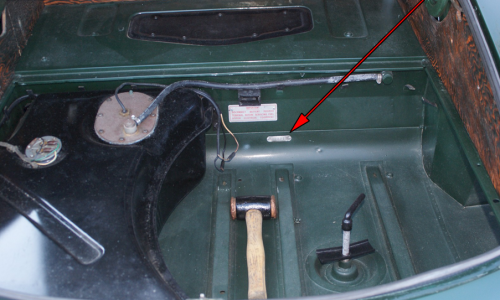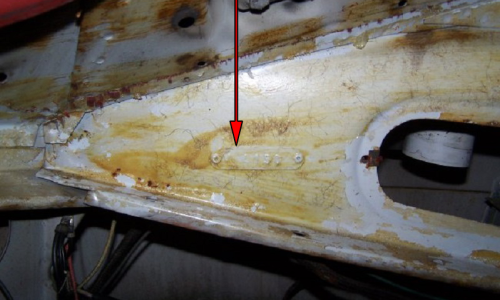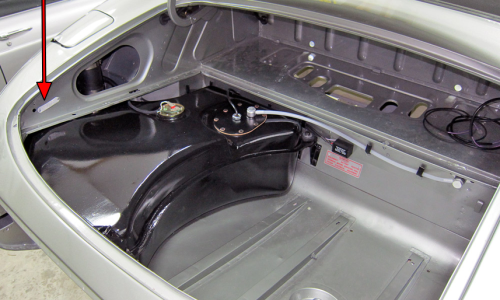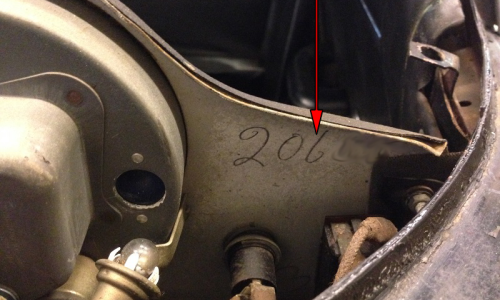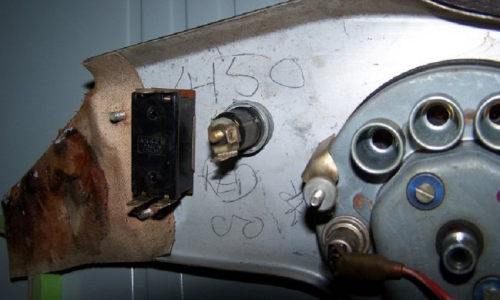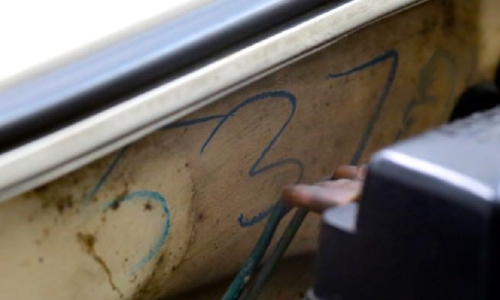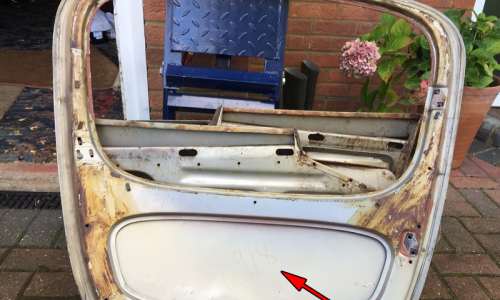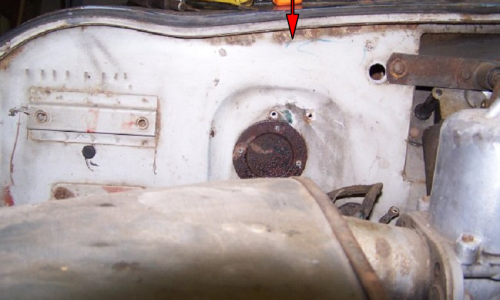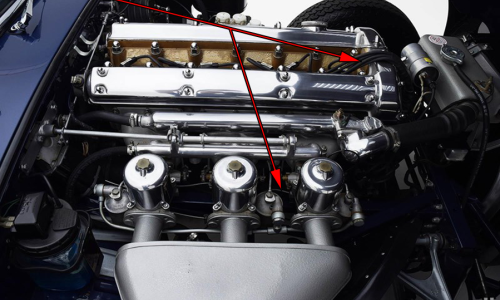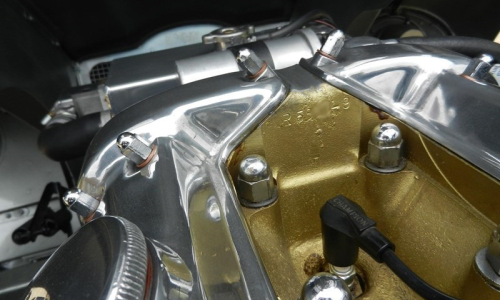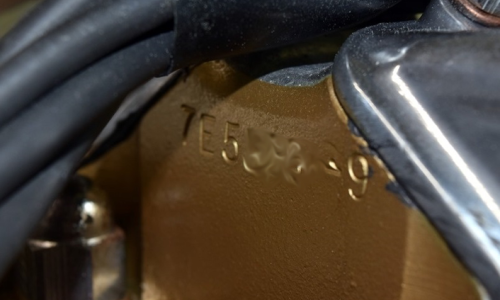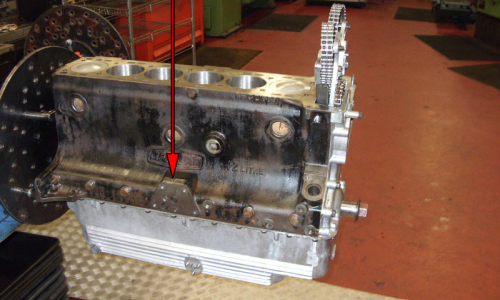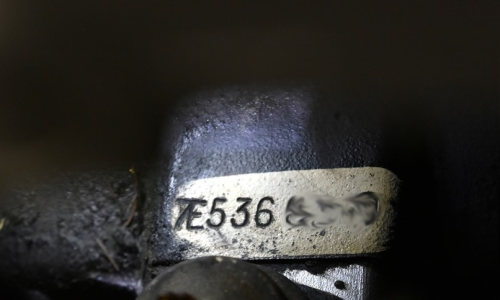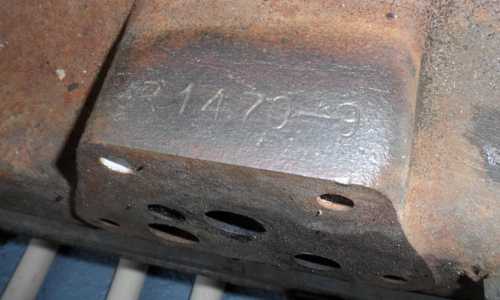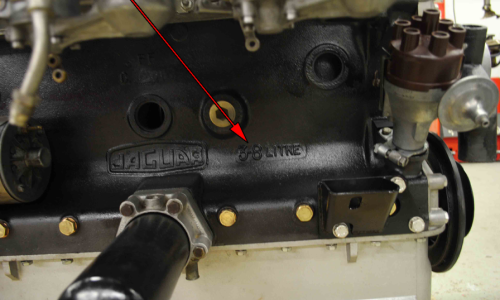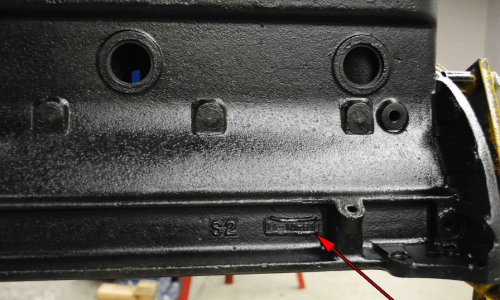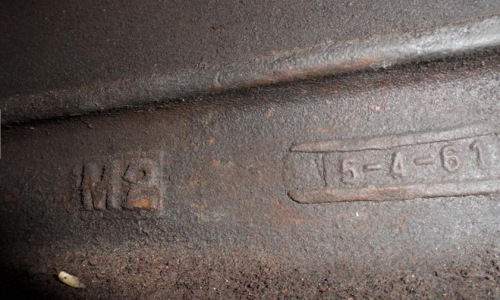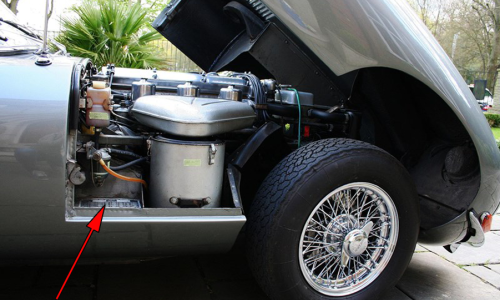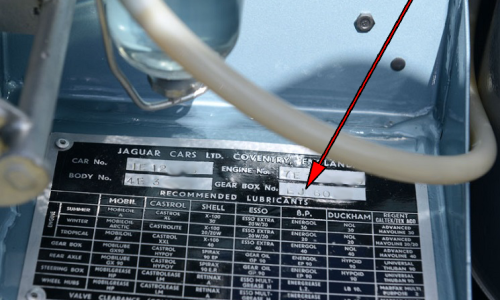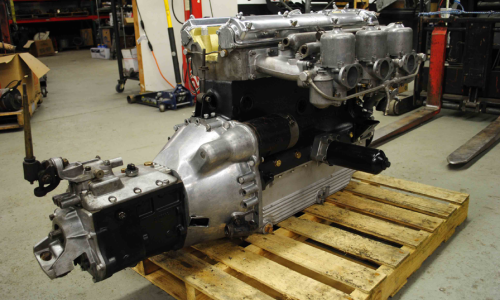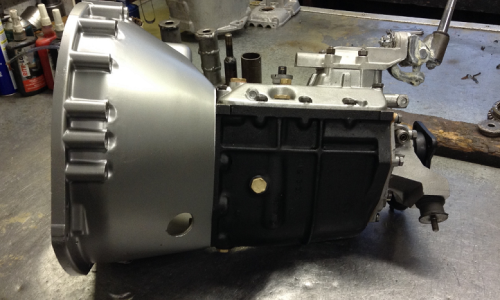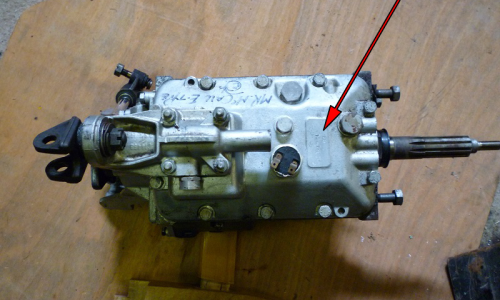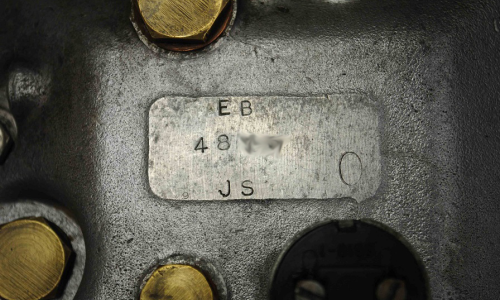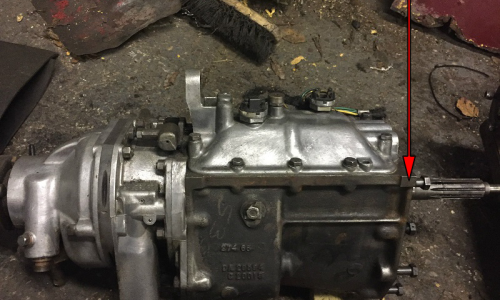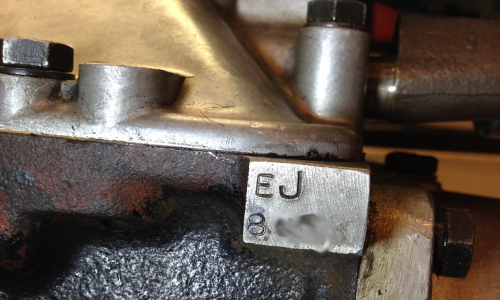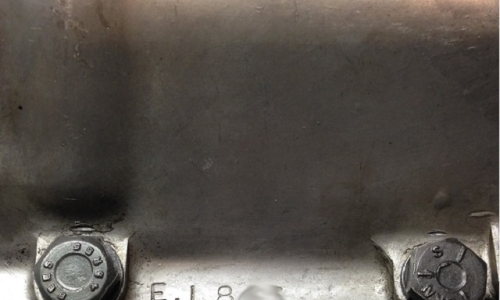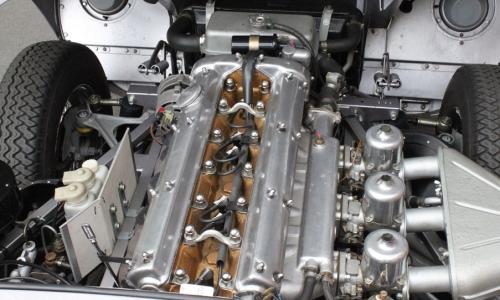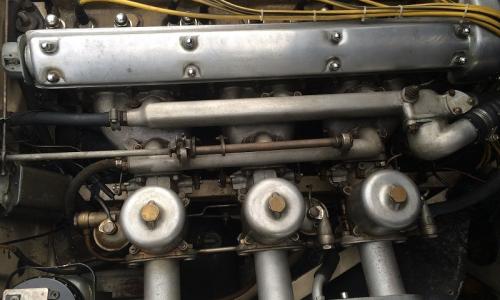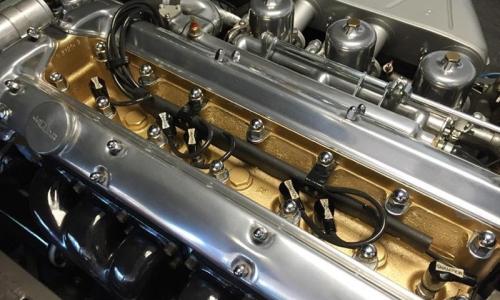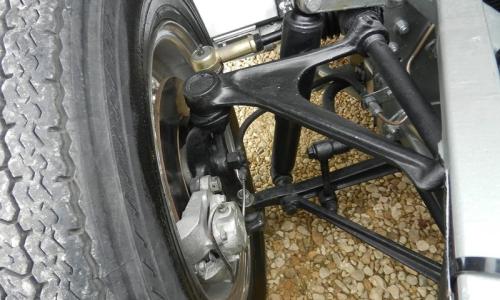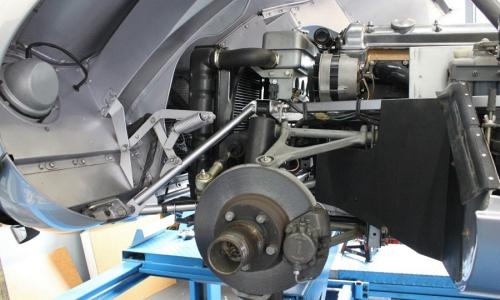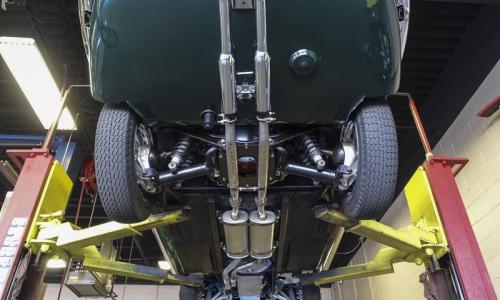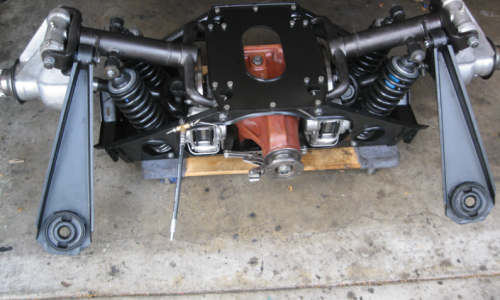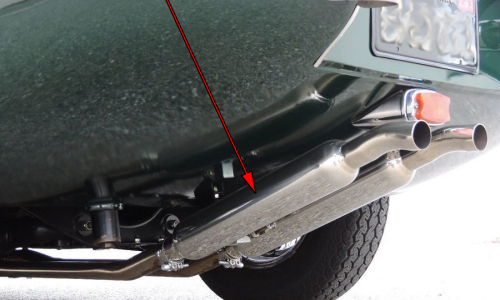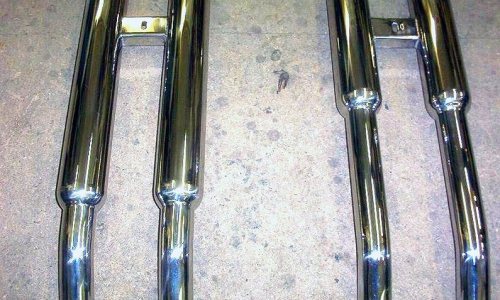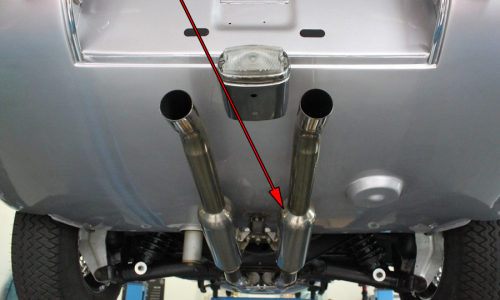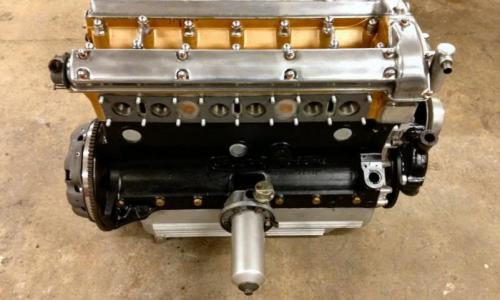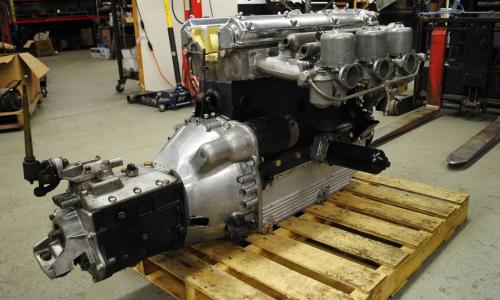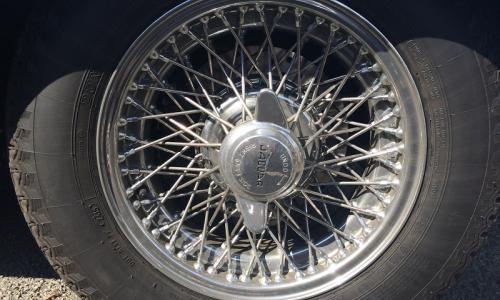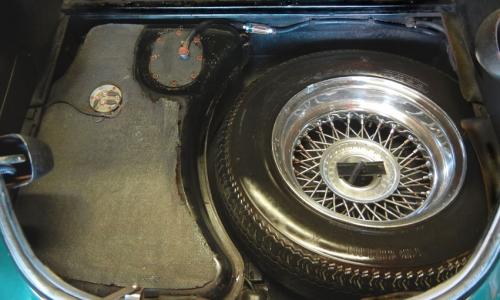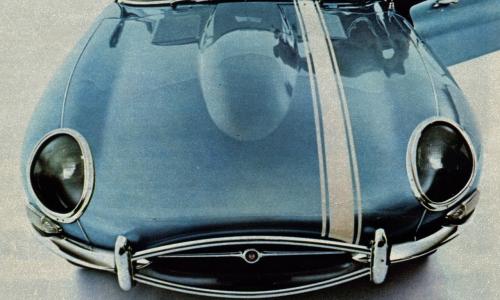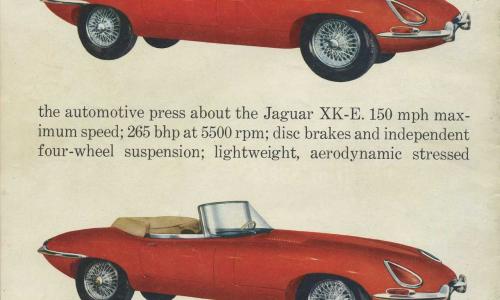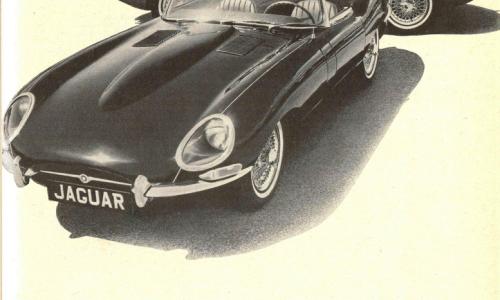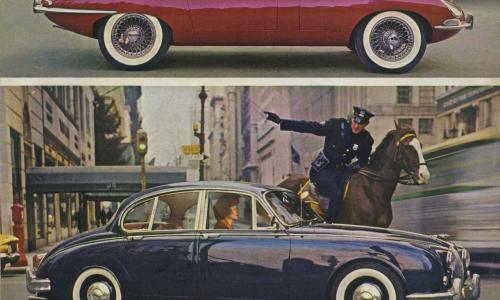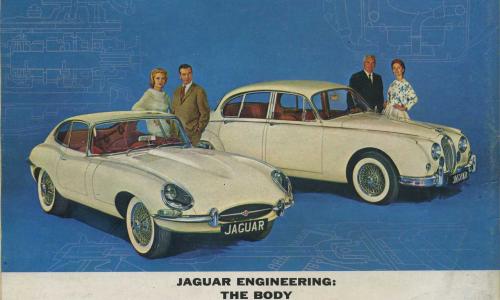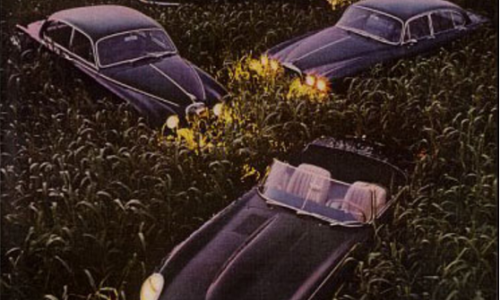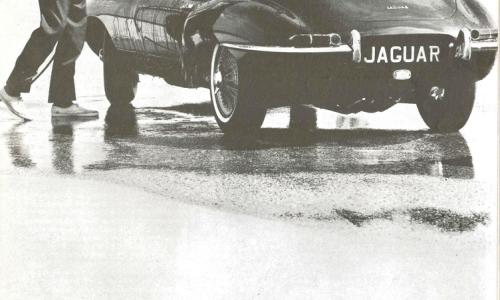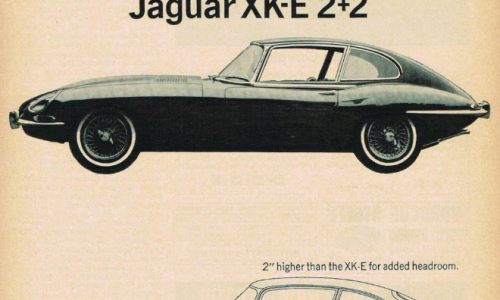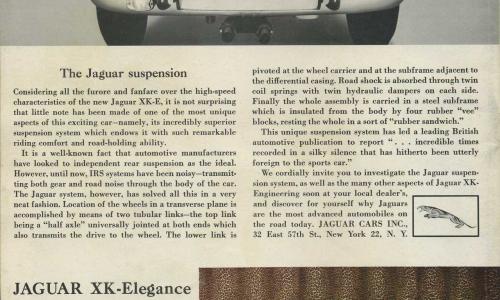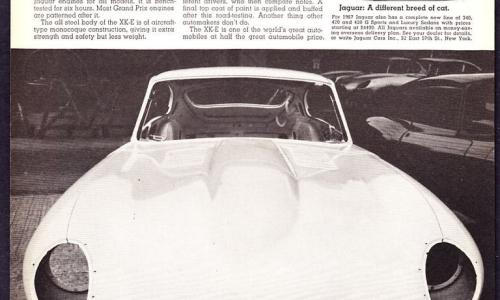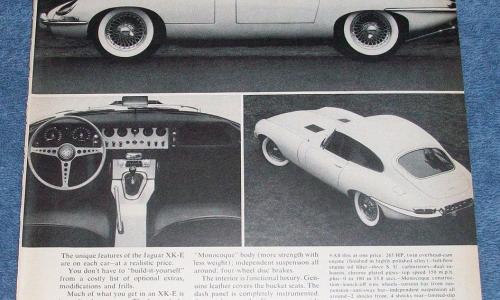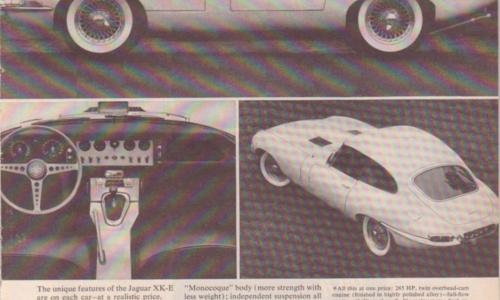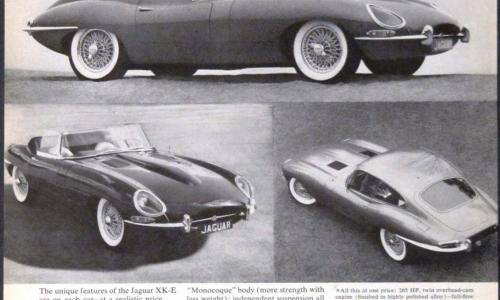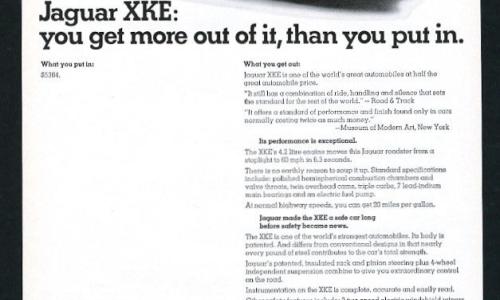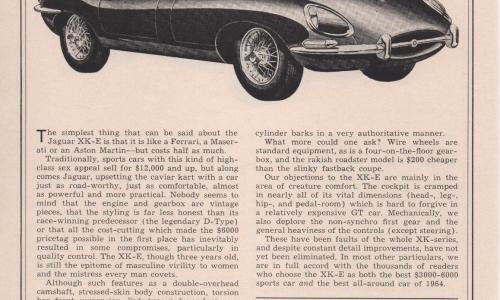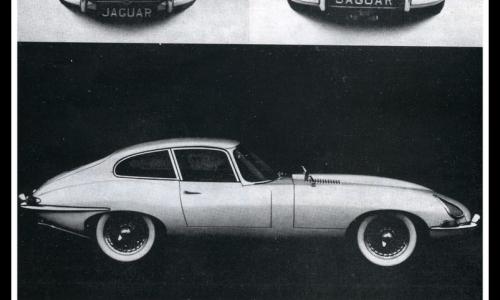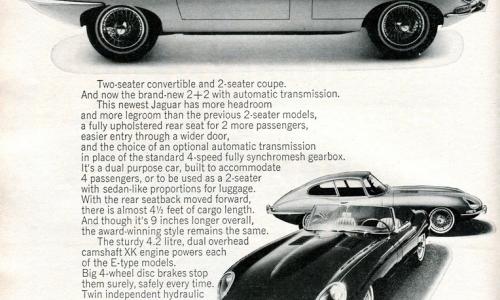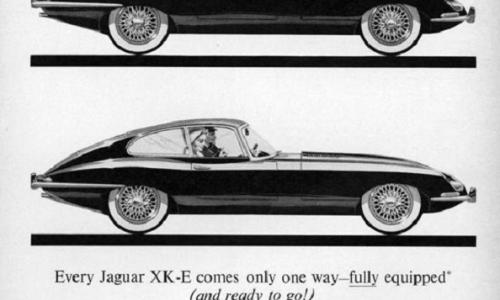INFO GUIDE: 1961 - 1967 Jaguar E-Type Series 1 (3.8L and 4.2L)
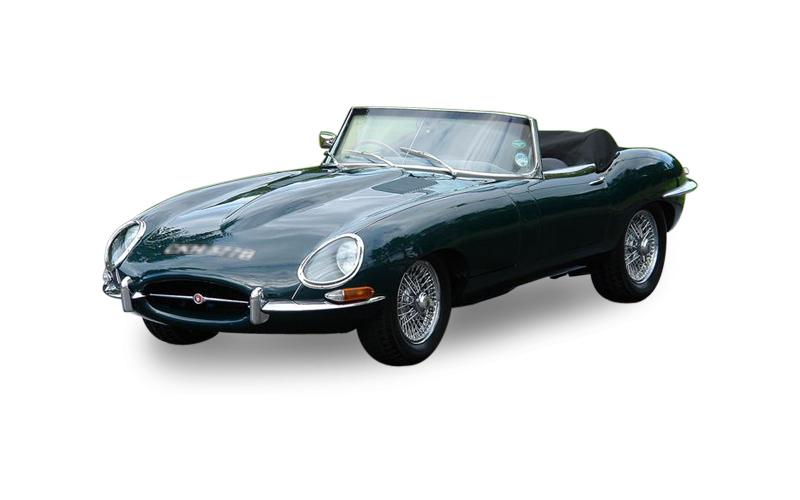
- Description
- 1. Exterior Features - Series 1 E-Type Jaguar (XK-E)
- 2. Interior Features - Series 1 E-Type Jaguar
- 3. Interior Colours - Series 1 E-Type Jaguar (XK-E)
- 4. Paint Colours and Codes - Series 1 E-Type Jaguar (XK-E)
- 4. Chassis Number (Car Number) - Series 1 E-Type Jaguar
- 5. Body Numbers - Series 1 E-Type Jaguar
- 6. Engine Number - Series 1 E-Type Jaguar
- 7. Gearbox / Transmission Numbers - Series 1 E-Type Jaguar
- 8. Mechanical Features - Series 1 E-Type Jaguar
- Original Documentation and Advertisements: Series 1 E-Type Jaguar
- References - Series 1 E-Type Jaguar (XK-E)
Description
This guide has been written for the Series 1 E-Type Jaguar (known as the XK-E in the US) produced between 1961 and 1967, and covers both the 3.8l and 4.2l cars. The Series 1 cars are particularly desirable, and typically demand higher prices than later series vehicles in the E-Type range, being seen by enthusiasts as the most asthetically and mechanically pure vehicles.
For clarity in understanding the vehicles covered in this guide, it is important to note that several changes occurred to the E-Type from August 1967, and cars made between August 1967 and throughout 1968 are regarded as a distinct series within the Jaguar community, known as the Series 1.5. The Series 1.5 cars have been outlined in a separate guide. Follow this link to view the information guides on other series vehicles in the E-Type range.
This guide includes information on exterior features, interior features, mechanical features, as well as details of the engine, body and chassis numbers applicable to the Series 1 E-Type, to assist in the identification of a genuine vehicle. If you have additional information or photographs you believe could benefit this guide, please contact us by clicking the button at the top of this page, or comment below.
E-Type (XK-E) Series 1: period of manufacture and production numbers:
| 3.8 litre (Series 1): | Number built: | 4.2 litre (Series 1): | Number built: |
| Roadster (LHD): February 1961 - September 1964 | 6,886 | Roadster (LHD): October 1964 – July 1967 | 5,888 |
| Roadster (RHD): February 1961 - September 1964 | 942 | Roadster (RHD): October 1964 – July 1967 | 863 |
| Fixed Head Coupe (LHD): February 1961 – September 1964 | 5,872 | Fixed Head Coupe (LHD): October 1964 – July 1967 | 4,249 |
| Fixed Head Coupe (RHD): July 1961 – September 1964 | 1,798 | Fixed Head Coupe (RHD): October 1964 – July 1967 | 1,583 |
| 2 + 2 Coupe (LHD): March 1966 – July1967 | 2,644 | ||
| 2 + 2 Coupe (RHD): March 1966 – July1967 | 974 |
*These production numbers have been taken from xkedata.com.
Production totals:
| Total Series 1 (3.8 litre) | 15,498 |
| Total Series 1 (4.2 litre) | 16,201 |
| TOTAL Series 1 | 31,699 |
These figures are out of a total of 72,507 E-Type’s produced across all series 1 - 3.
Please note, this guide has been written based on a variety of online sources and enthusiast input. You should not rely on this guide to make any purchasing decision and we make no representation that all information is accurate. You should always seek independent professional advice when looking to purchase a unique car. Please follow us on Facebook to support the production and continued improvement of these guides.
- Available in 3 body styles:
- Roadster / Open Two Seater (OTS)
- Fixed Head Coupe (FHC)
- Fixed Head Coupe 2+2 (introduced in March 1966).
- OTS cars had the option of a removable hard-top cover (see images), and the convertible top had 3 bows (as opposed to the later 2-bow design introduced on the Series 1.5).
- The vast majority of Series 1 cars had glass covered headlights. In early 1967 this stopped (with a few exceptions). These late Series 1 cars had their headlights covers removed and had a redesigned bucket/base. This Series 1 open headlight design is the same as the Series 1.5, however, differs from the Series 2 open headlight cars, which had revised bucket designs and headlights mounted further forward.
- Small front grille (relative to later models) with single chrome strip through the middle and small centre Jaguar badge.
- Indicators / parker lights were positioned above bumpers front and back. US-spec cars had all-white front lenses, and all-red back lenses. Most other markets (including the UK-spec cars) had white/amber front lenses and red/amber rear lenses. See images for details.
- 15 X 5” steel 72 spoke wire wheels. All series 1 cars had a large central winged wheel nut - a feature removed on the series 1.5.
- Originally fitted with Dunlop 6.4" × 15" RS5 radial ply tyres (or 6.5" X 15" Dunlop Racing R5 tyres for competition). Late Series 1 cars were fitted with Dunlop 185 - 15 SP41 or 185 VR 15 Pirelli Cinturato radial ply tyres.
- All 3.8l cars had a "Jaguar" text badge on the rear trunk lid. The 4.2l cars had “E-Type” and “4.2” text badging.
- Twin exhaust pipes exited the car centrally under the number plate. Original exhaust size was 1.75" (many have increased to 2"). See the mechanical features section of this guide for further differences in the exhaust resonators between the 3.8l and 4.2l cars.
- The first 92 (RHD) and the first 386 (LHD) cars featured bonnet locks on the outside. These were quickly superseded by internal locks. See images for a better description.
- Cars built before mid-1962 had the bonnet louvers welded in as separate panel on the bonnet/hood. In later cars, the louvers were part of the panel stamping. On very early cars, look for the weld marks underneath the edges of the bonnet vents / louvers.
- Dashboard switches were toggles (as opposed to rocker switches which were introduced in the Series 1.5).
- Instrument Gauges were all Smiths. In the main cluster behind the wheel was a 160mph speedometer and an RPM timer with clock at the base. 3.8l cars had a redline of 5,500rpm, whilst the 4.2l redline marking was at 5,000rpm.
- Central dashboard Smiths instruments from left to right included water temp, oil pressure, fuel and amperage (on a LHD car). These were in the same order on RHD cars, but reading from right to left.
- 3.8 Litre cars had a polished aluminium central dash surface / console area, which applied up to September 1963. Post-September 1963 cars (including all 4.2l cars) had a black vinyl finish on the dash, and a leather covered console, trimmed in the same colour as the seats.
- 3.8l Cars: Had leather trimmed bucket seats with moquette backing. The OTS had a more pointed / round top when compared to the FHC, which had slightly more squared off backrests, but nonetheless still curved at the top. Early seats featured large sectioned trim panels, as opposed to the later parallel pleats.
- 4.1l cars had slightly larger seats, with 6 parallel pleats on the squab and back, and had distinctly more broader, flat backrests. The sides and backs of these later seats were trimmed in vinyl or moquette.
- Door card trim, rear trunk trim and carpets matched the seat upholstery colour. Note, door card trim design differed from later series cars, with non-pocket doors, all chrome handles and a small arm rest.
- Shielded rear door hinges on the FHC were introduced in 1963.
- Polished aluminium sports steering wheel with timber rim, and chrome surround/ring on central boss. Central Boss had an “E Type” badge as shown in the images.
- The first 534 RHD Series 1 cars, and the first 2,086 LHD Series 1 cars had flat front floor pans (see images for the distinction). The date on which flat-floor production ended is inconsistent across several sources we've found, however, we've since located a Jaguar Service Bulletin from May 1962 (see last image in the gallery) which confirms the body numbers from which dished floor pans were applied. This service bulletin confirms that dished / recessed floor pans were applied from the following body numbers onward:
- RHD open two-seater: From body number 2879.
- RHD fixed head coupe: From body number 1635.
- LHD open two-seater: From body number 2889.
- LHD open two-seater: From body number 1647.
- Interior trim colours available on the Series 1 have been summarised in the next section of this guide.
The below table outlines the factory paint and interior colours available with the Series 1 E-Type Jaguar. These have been cross-checked as best as possible, however, exceptions may exist (including special order cars), and the data may not be 100% accurate See references at the base of this guide for further information. If you are aware of any corrections or additions needed, please contact us.
| Paint colour | Available interior colours | Series 1 years available |
| Black | Red, Grey, Tan, Light Tan | 1961 - 1967 |
| British Racing Green | Suede Green, Beige, Tan, Light Tan | 1961 - 1964, 1967 |
| Bronze | Beige, Red, Tan | 1961 - 1964 |
| Carmen Red | 1961-1962: (Buiscuit, Red) 1963 - 1967: (Black) | 1961 - 1967 |
| Claret | Beige | 1961 - 1962 |
| Cotswald Blue | Dark Blue | 1961 - 1964 |
| Cream | 1961 - 1962: (Cream, Red), 1963 - 1967: (Red, Black) | 1961 - 1967 |
| Dark Blue | Red, Light Blue, Dark Blue, Grey | 1965 - 1967 |
| Golden Sand | Red, Light Tan, Black | 1962 - 1967 |
| Imperial Maroon | Tan | 1961 - 1962 |
| Indigo | Red, Light Blue | 1961 - 1962 |
| Mist Grey | Red | 1961 - 1964 |
| Old English White | Red, Black | 1961 - 1967 |
| Pale Primrose | Black, Beige | 1964 - 1967 |
| Opalescent Dark Blue | 1961 - 1962: (Dark Blue, Red) 1963 - 1964: (Grey, Dark Blue) | 1961 - 1964 |
| Opalescent Silver Blue | Grey, Dark Blue, Red | 1961 - 1967 |
| Opalescent Dark Green | Suede Green, Beige, Tan, Light Tan, Black | 1961 - 1967 |
| Opalescent Silver Gray | Red, Light Blue, Dark Blue, Grey, Black | 1961 - 1967 |
| Opalescent Gunmetal | Red, Dark Blue, Light Blue, Beige | 1961 - 1964 |
| Opalescent Maroon | Maroon, Beige, Black | 1963 - 1967 |
| Sand | Black, Beige | 1963 - 1964 |
| Sherwood Green | Suede Green, Tan, Light Tan | 1961 - 1964 |
| Warwick Grey | Red, Dark Blue, Light Tan, Black | 1965 - 1967 |
| Willow Green | Grey, Beige, Suede Green, Light Tan | 1967 |
The below table outlines the factory paint colours available on the Series 1 E-Type Jaguar, and the years in which they are believed to have been offered. We have also included PPG and British Leyland paint codes, which may be useful if a Jaguar code cannot be found (which was the case for several colours, despite out best research efforts). We have done our best to confirm the accuracy of these colours by cross-checking against many original cars and sources, however, exceptions may exist, and we cannot guarantee the accuracy of these colours and codes.
| Paint Colour | Jaguar Paint Code | PPG / Ditzler Code | Dupont Code | Series 1 Years available |
| Black | 9000 (PPG) | 9000 | 99L | 1961 - 1967 |
| British Racing Green | 602 | 43907 | 8542L | 1961 - 1964, 1967 |
| Bronze | 25458 | 22189 | - | 1961 - 1964 |
| Carmine Red | 303 | 70824 | 8311LH | 1961 - 1967 |
| Claret | 50552 (PPG) | 50552 | IC183H | 1961 - 1962 |
| Cotswald Blue | 7411A | 12199 | - | 1961 - 1964 |
| Cream | 2335A | 8157 | 8313L | 1961 - 1967 |
| Dark Blue | 529 | 13141 | 8320L | 1965 - 1967 |
| Golden Sand | 802 | 22346 | 8318L | 1962 - 1967 |
| Imperial Maroon | 7420 | 50553 | - | 1961 - 1962 |
| Indigo | 7412A | 12119 | 12119 | 1961 - 1962 |
| Mist Grey | 31904 (PPG) | 31904 | - | 1961 - 1964 |
| Old English White | 250 | 8233 | 32501L | 1961 - 1967 |
| Opalescent Maroon | - | 50629 | 8317LH | 1963 - 1967 |
| Pale Primrose | 104 | 81499 | 8319L | 1964 - 1967 |
| Opalescent Dark Blue | 7409A | - | 1961 - 1964 | |
| Opalescent Silver Blue | 7410S | 12594 | 8316L | 1961 - 1967 |
| Opalescent Dark Green | - | 43022 | 8314L | 1961 - 1967 |
| Opalescent Grey Silver | 31627 (PPG) | - | 8315L | 1961 - 1967 |
| Opalescent Gunmetal | 7402A | 32222 | - | 1961 - 1964 |
| Opalescent Maroon | 7421A | - | 8317LH | 1963 - 1967 |
| Sand | - | - | - | 1963 - 1964 |
| Sherwood Green | 605 | 42596 | 8312L | 1961 - 1964 |
| Warwick Grey | 703 | 32522 | 8321L | 1965 - 1967 |
| Willow Green | 603 | 43742 | 8323L | 1967 |
Chassis number / car number format:
The chassis number format differs between 3.8l and 4.2l cars, as outlined below.
3.8 litre cars (1961 - 1964):
- 6-digit car number within the ranges detailed below:
| Body Style | Chassis number range |
| RHD Open Two Seaters (943) | 850001 - 850943 |
| RHD Fixed Head Coupes (1,799) | 860001 - 861799 |
| LHD Open Two Seaters (6,887) | 875001 - 881887 |
| LHD Fixed Head Coupes (5,873) | 885001 - 890873 |
4.2 litre cars (1965 - 1967):
- 4 or 5-digit car number, prefixed by 1E, within the relevant ranges detailed below:
| Body Style | Chassis number range |
| RHD Open Two Seaters (1,183) | 1E 1001 – 1E 1863 |
| LHD Open Two Seaters (8,367) | 1E 10001 – 1E 15979 |
| RHD Two Seater Coupe (1,956) | 1E 20001 – 1E 21583 |
| LHD Two Seater Coupe (5,814) | 1E 30001 – 1E 34582 |
| RHD 2 + 2 Coupe (1,379) | 1E 50001 – 1E 50974 |
| LHD 2 + 2 Coupe (4,220) | 1E 75001 – 1E 77708 |
Car number / chassis number Location:
The number is stamped in 2 locations (see images for details):
1. On the vehicle's data plate, which sits on the right hand side of the engine bay, below the fuel bowl/filter.
2. Stamped into the top of the square frame next to the right front wheel (the cross member above the hydraulic shock absorber mounting).
Body number:
Body numbers can also assist in identifying a Series 1 car. Body number formats changed throughout the years, with certain number ranges applicable to the 3.8l and 4.2l cars, and certain prefixes applied to the different body styles. These are outlined below:
3.8 litre cars:
- Open 2 seater = R followed by a 4-digit body number (starting at 1001).
- Fixed head coupe = V followed by a 4-digit body number (starting at 1001).
4.2 litre cars:
- Open 2 seater = 4E followed by a 4-digit body number (starting at 1001).
- Fixed head coupe = 4E followed by a 5-digit body number (starting at 20001).
- 2+2 FHC = 4E followed by a 5-digit body number (starting at 50001).
Body number location:
The body number can be found in multiple locations (see examples of each in the images):
1. Stamped into the vehicle's data plate.
2. Embossed on a small plate/tag riveted into the body, which may be in one of several locations. Early cars (dates unspecified) may have a body tag and number on the engine bay firewall. Other locations include behind the rear licence plate and in the left side inner trunk panel (under the trim/above the fuel tank area on the inner mudguard). Some early cars have reportedly had more than 1 tag.
3. Stamped into the bonnet of the car, on the forward support brace.
4. Hand written on multiple locations, including the rear hatch (behind the trim), right or left front firewall, top of picture frame (above the fan), inside the rear hatch, behind the instrument cluster and underside of the dash-pad. There may be additional locations, as this was simply a number written on parts to assist in allocating them to the correct body.
The engine number for an E Type Jaguar Series 1 should be in the following format:
- Series 1 - 3.8 litre engine (pre February/March 1963 cars:
- The engine number will be prefixed by "R", followed by a 4-digit number beginning 1001.
- Series 1 - 3.8 litre engine post February/March 1963 cars:
- The engine number will be prefixed by "RA", followed by a 4-digit number beginning 1001.
- Series 1 - 4.2 litre engine:
- FHC and OTS: The engine number will be prefixed by "7E", followed by a 4-digit number beginning 1001.
- 2+2 FHC: The engine number will be prefixed by "7E", followed by a 5-digit number beginning 50001.
Location of engine number:
The engine number will be stamped in the following locations (see images for a better description):
- On the vehicle's data plate,
- Front-end of the cylinder head,
- Right-hand side of the engine block, just above the flange where the oil filter connects.
The engine capacity is also cast into the side of the engine block, along with the engine casting date, as shown in the images. This data can assist further in confirming the identity of an E-type engine.
The gearbox/transmission number on a Series 1 E-type will depend on the vehicle's age, with the early 3.8l cars fitted with different gearboxes than the later 4.2l cars. The different numbers are outlined below:
- Pre-1965: Most 3.8l vehicles were fitted with the Moss non-synchromesh gearbox (on 1st gear). The gearbox number should begin with the prefix "EB", followed by a 4-digit number. On the vehicle's data plate, there will also be an additional suffix after the gearbox number, being either "JS" (standard shaved gears) or "CR" (close ratio ground gears). However, it is suggested that some late model 3.8 cars were fitted with full synchromesh gearboxes. We have not cited any examples of these cars, and cannot confirm whether an alternative gearbox prefix was applied. Please contact us if you have further information.
- 1965 onward: These vehicles were fitted with a full synchromesh Jaguar gearbox. The gearbox number should begin with one of the following prefix/number combinations (note, both were close ratio gearboxes):
- OTS or FHC: "EJ", followed by a 3 or 4-digit number.
- 2+2 FHC: "EJS", followed by a 3 or 4-digit number.
Note: Some 2+2's also had a suffix of "BW" in front of their chassis number. This indicates a Borg-Warner automatic transmission. However, not all automatic cars had the suffix. Several sources have suggested "EE" was also a gearbox prefix applied to the E-type after 1965. However, we have viewed an extensive number of data plates for vehicles and have not been able to track down any examples. If you have more information, please contact us.
Location of gearbox number:
The gearbox number will appear on the vehicle's data plate, as well as in the following locations on the gearbox itself:
Moss Gearbox:
- Stamped into the gearbox casing on a small rectangular area on top of the gearbox casing (next to a large circular plug)
Jaguar Gearbox:
- Stamped into the top of the transmission (on the aluminium gearbox cover flange edge).
- Stamped into the side of the gearbox body on a small square block (top edge - right hand side of vehicle).
- Two engines were available:
- Straight 3.8L 6 cylinder DOHC engine (1961 - 1964). Power: 198kw / 325 Nm torque.
- Straight 4.2 litre 6 cylinder DOHC engine (1965 to 1967). Power: 198kw / 385Nm torque.
- Both engines in the Series 1 had polished aluminium cam/valve covers (changed to a ribbed design from the Series 1.5 in late 1967).
- All 3.8l Series 1 cars came with a 4-speed (non-synchromesh on 1st gear) transmission. This was known as the Moss Gearbox, and applied until late 1964. Some early 4.2l cars also utilised this gearbox.
- From late 1964 (including most 4.2l cars) the vehicles were fitted with a Jaguar 4-speed all synchromesh manual transmission, and the 2 + 2 coupes were also available with a 3-speed Borg-Warner automatic transmission.
- Salisbury limited slip differential.
- All Series 1 cars came with three 2” SU carburettors (emissions restrictions meant alterations to this setup were made from the Series 1.5 onward).
- Rack & pinion steering.
- All independent suspension (rear coil spring and torsion bar front end).
- Four wheel power assisted disc brakes (rear brakes being inboard).
- Series 1 cars came with 1.75 inch exhaust pipes. The 3.8l cars had long body resonators and shorter pipe ends, whilst the 4.2l cars had shorter resonators and longer pipe ends. The pipes and resonators were chrome plated. (See images for the difference).
- Originally fitted with Dunlop 6.4" × 15" RS5 radial ply tyres (or 6.5" X 15" Dunlop Racing R5 tyres for competition). Late Series 1 cars were fitted with Dunlop 185 - 15 SP41 or 185 VR 15 Pirelli Cinturato radial-ply tyres.
- The earliest E-Types had a Pumpkin Orange cylinder head (paint code not known), which has been traced as high as engine number R-2518-9 according to the Jaguar Club of North America. Later cylinder heads were painted Bradite Gold Jaguar Harvest Gold (which unfortunately is believed to no longer be produced). Several people have mentioned in forums that POR15 Olds Gold Engine Enamel is a close match. For 1967 models, the cylinder head was left unpainted.
We have started collecting several examples of original brochures / advertisements for the Series 1 E-Type / XK-E, and the intention is to display these here for historical purposes.
If anyone has copies of early documentation, such as brochures, advertisements or specification sheets, please contact us so we can display the information.
Please note, all documentation placed here is not owned by Classic Register, and is for historical reference and educational purposes only. Upon request from any original copyright owner, the material will be removed.
The following sources, among input from many owners and enthusiasts, have contributed to the creation of this page. If you have any further information you believe can be added, please let us know by contacting us or commenting at the base of this page.
https://www.jaguarheritage.com
http://www.uniquecarsandparts.com.au/
Crespin, C. (2007). Jaguar E-Type: The Essential Buyer's Guide, Veloce publishing.
